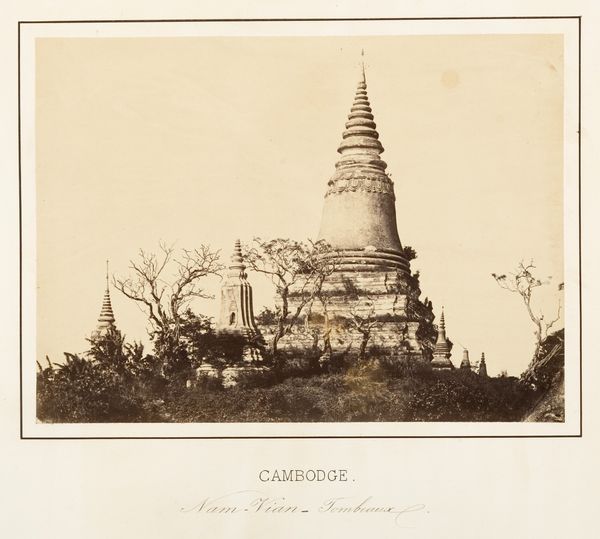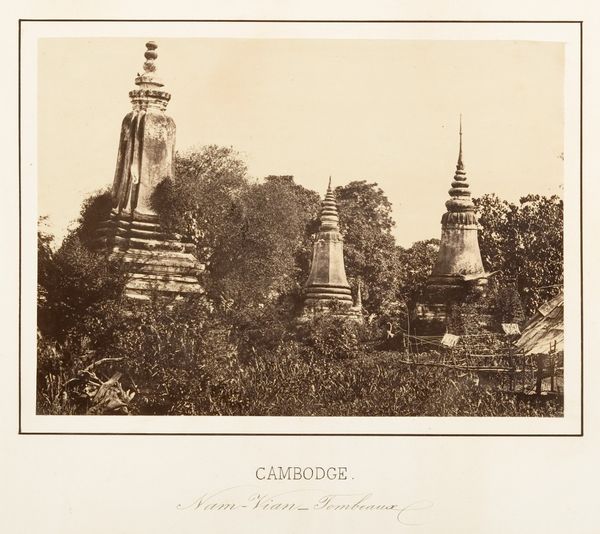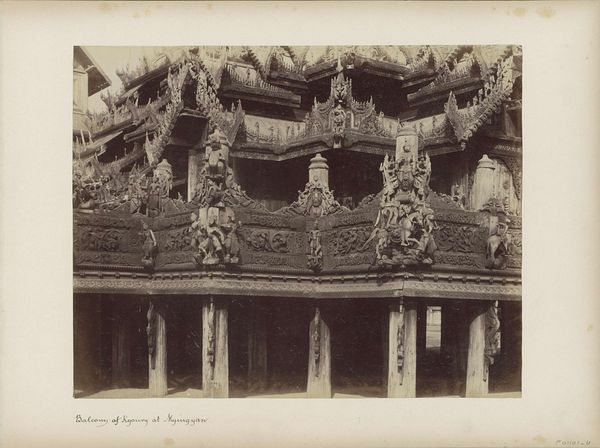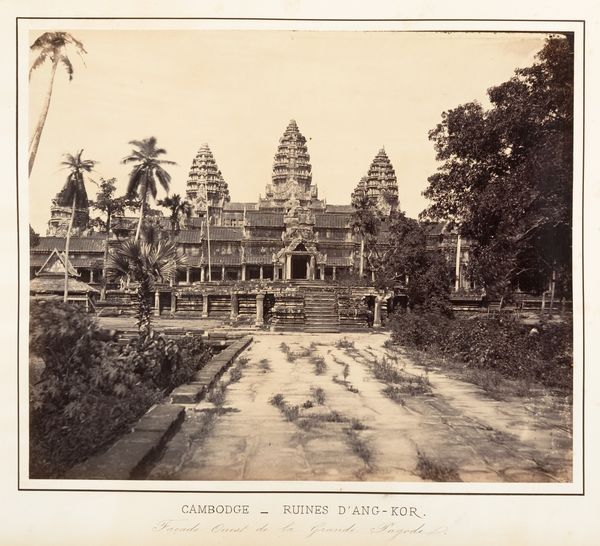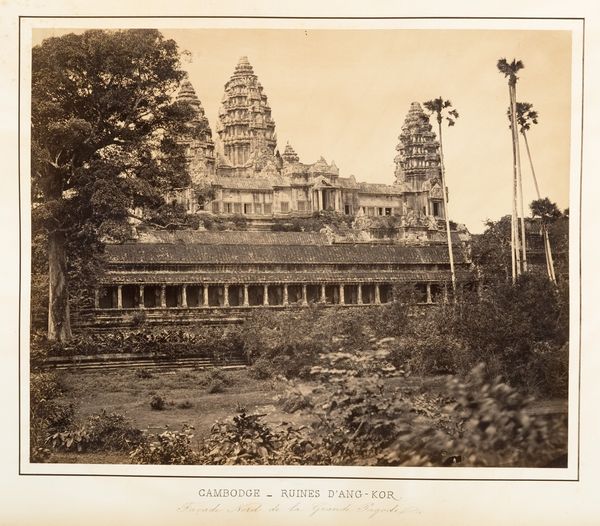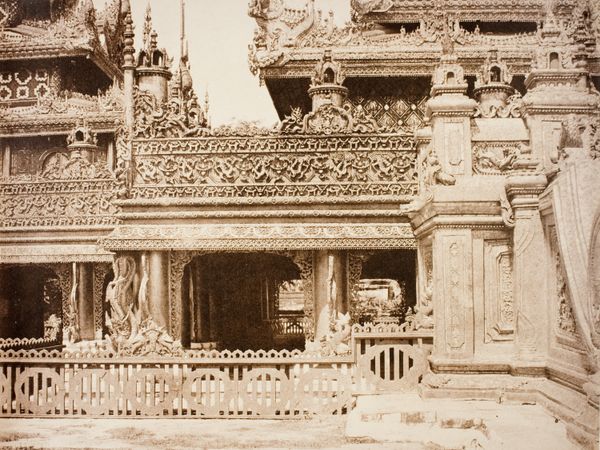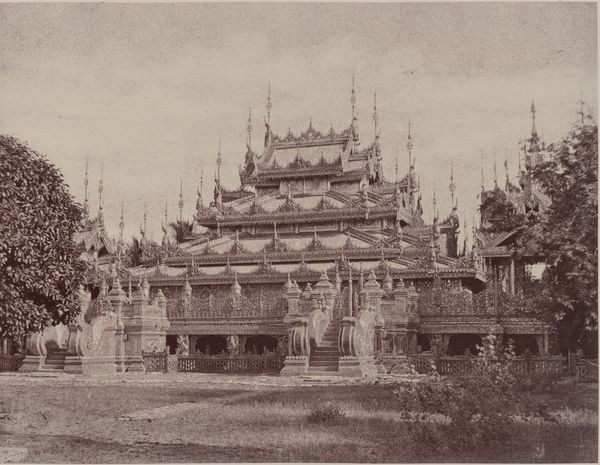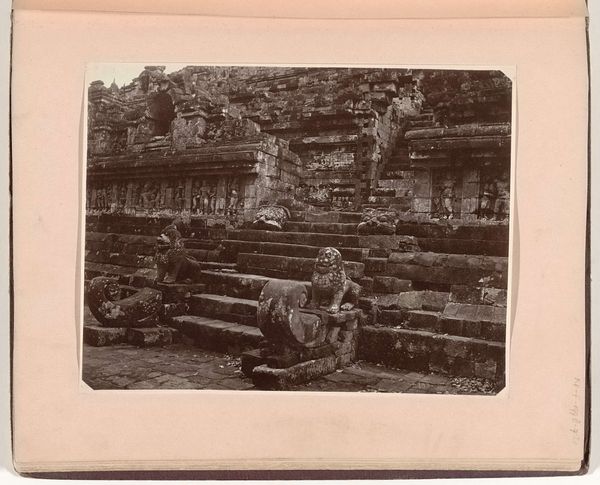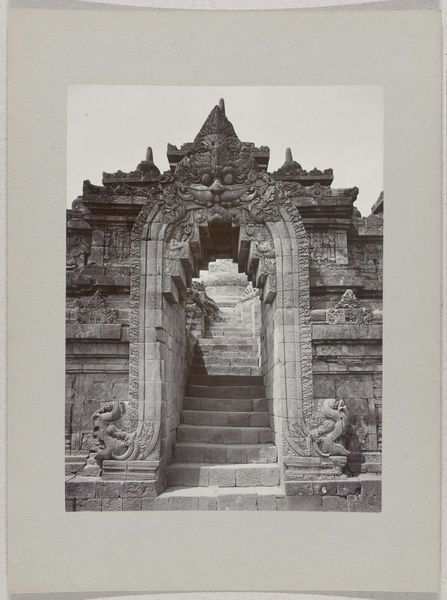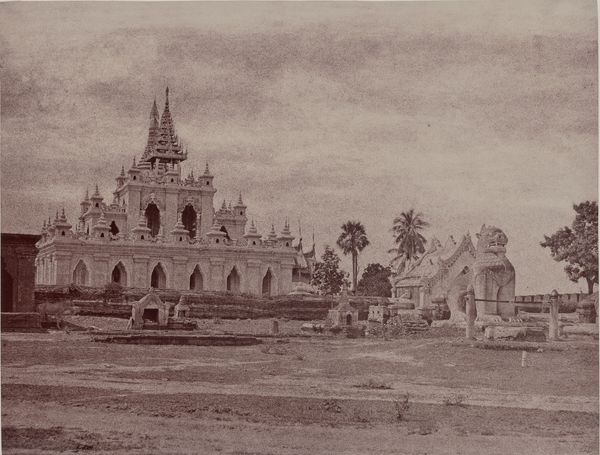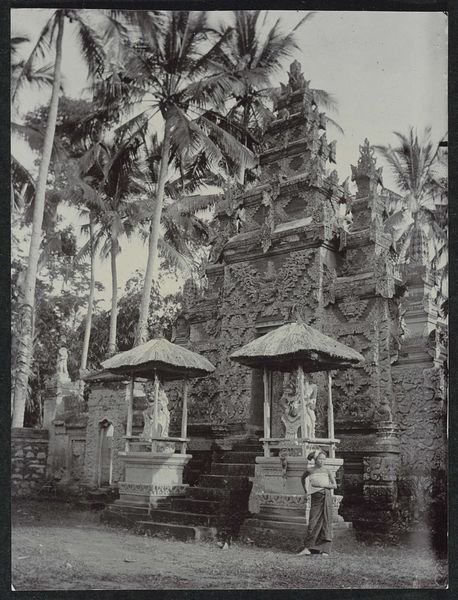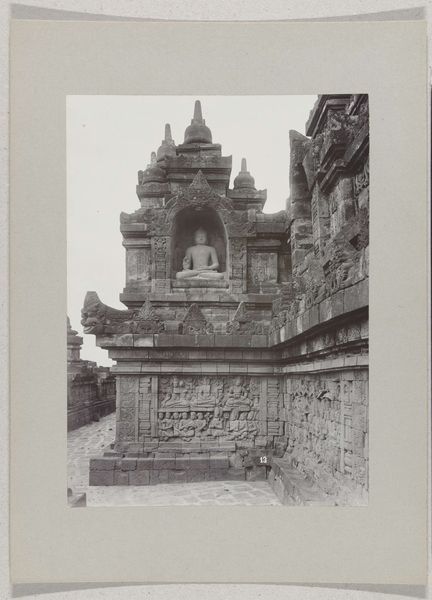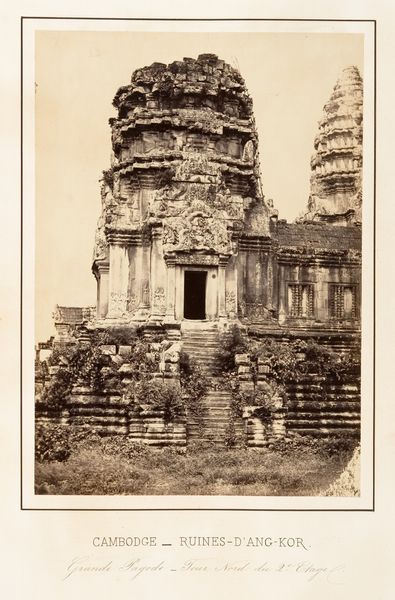
Portique d'entrée de la Grande Galerie de la Pagode 1866
0:00
0:00
photography, gelatin-silver-print, architecture
#
asian-art
#
landscape
#
photography
#
historical photography
#
gelatin-silver-print
#
19th century
#
architecture
Dimensions: 16.9 x 22.5 cm (6 5/8 x 8 7/8 in.)
Copyright: Public Domain
Curator: Looking at this gelatin silver print from 1866, Emile Gsell transports us to the ruins of Angkor, specifically the entrance portico of the Grand Gallery of the Pagoda. Editor: It’s incredibly evocative. There’s a palpable sense of decay, a quiet grandeur amidst the ruins. The tonal range, the way light falls across the stones, creates an atmosphere that's both beautiful and melancholic. Curator: Gsell, who was among the first to photograph Angkor, had an interesting role to play within the French colonial project. His photographs served to document and, in some ways, legitimize French presence in Indochina. Editor: Exactly, we need to think about the colonial gaze at play here. Gsell isn’t just capturing the ruins; he's presenting a version of Cambodian history that, consciously or unconsciously, feeds into a specific narrative. Curator: Absolutely. These images were circulated in Europe, shaping perceptions of Southeast Asia and its place within a global order that favored Western dominance. One must think how photographs contributed to building ideas about French protectorate. Editor: And this impacts not only colonial history, but its afterlives. Who had access to the space or image? Whose narratives were made prominent, whose were erased? This piece is part of a continued dialogue around power, representation and historical access. Curator: Photography also held tremendous documentary power for its perceived truthfulness, giving his images extra authority and gravitas. That perception adds another layer to Gsell’s influence at the time. Editor: This perceived "truthfulness," of course, overlooks the choices the photographer makes. The angle, the framing, even the printing process – they all contribute to constructing a particular point of view. Photography and access were expensive at this point, limiting local authorship of photographic documentation. Curator: Indeed, these decisions reflect a particular sensibility and undoubtedly impacted its reception within French society. It offered a new, very exotic location. Editor: Seeing it today prompts questions about the ethics of representation. While appreciating Gsell’s technical skill, we must critically examine the colonial undertones and acknowledge the power dynamics inherent in this act of photographic capture. Curator: It does. While there are aesthetic accomplishments and careful rendering of architectural space, historical understanding is critical. Editor: A powerful and essential addition to the narrative surrounding this work.
Comments
No comments
Be the first to comment and join the conversation on the ultimate creative platform.
